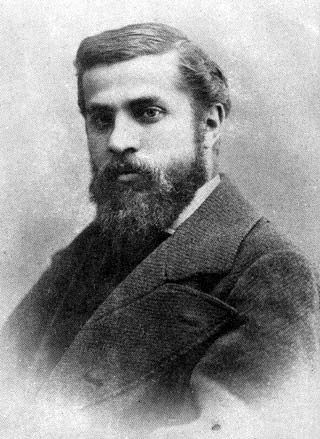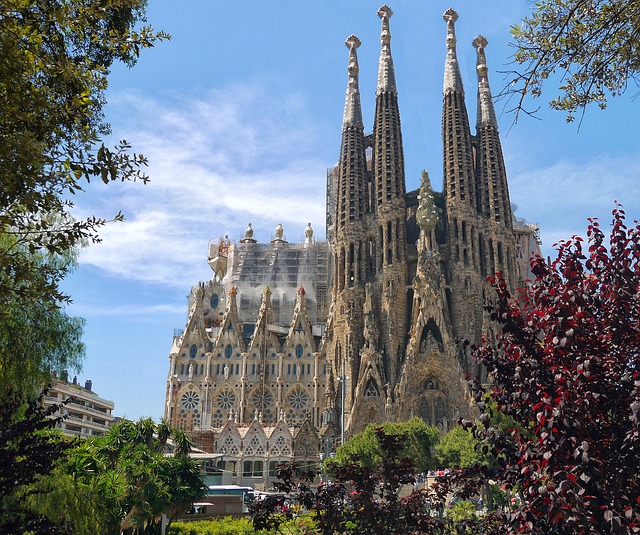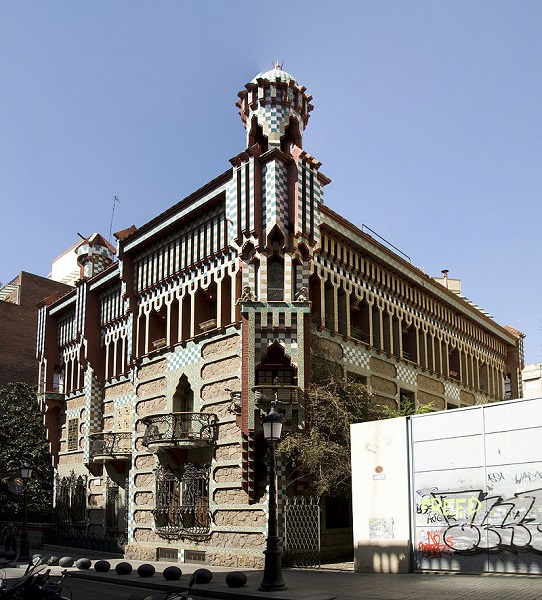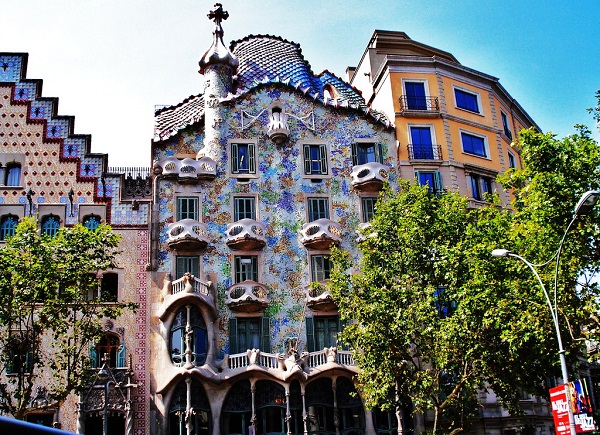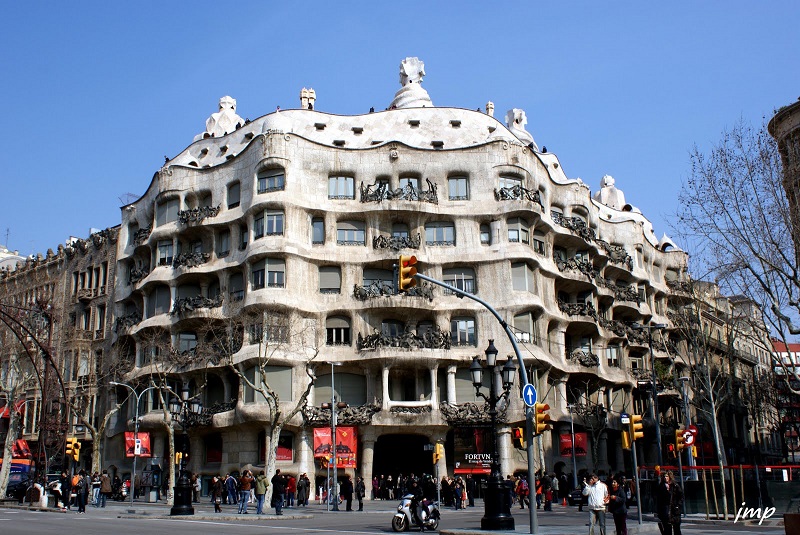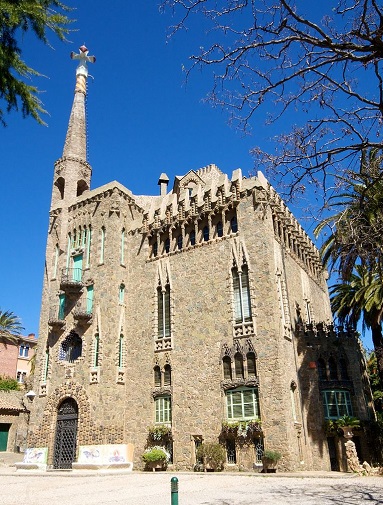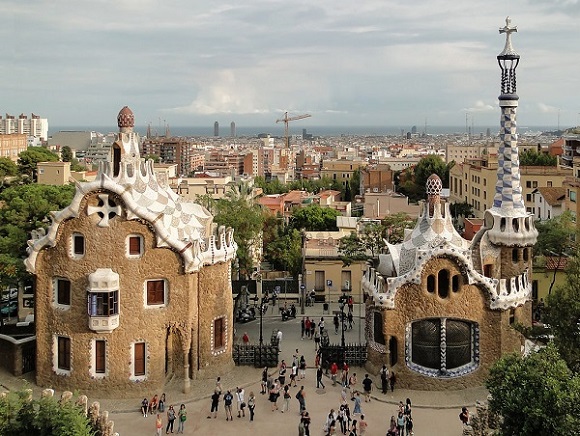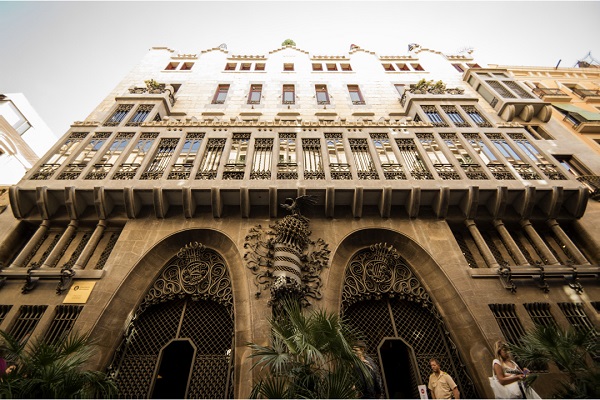Antoni Gaudi
Contents |
[edit] Introduction
Antoni Gaudi (1852 – 1926) was a Catalan architect who designed several iconic buildings, mainly in Barcelona, and is considered one of the most influential architects of all time.
He was perhaps the best known practitioner of Catalan Modernism, however, Gaudi’s work transcended stylistic movements and his buildings are notable for their highly individualised and distinctive styles, with inspiration drawn from the natural world.
Gaudi developed his unique style from neo-Gothic art and Oriental techniques, becoming part of the Modernista movement of the late-19th/early-20th centuries. His most famous work is the, still-incomplete, Sagrada Familia, in Barcelona, to which he dedicated the final part of his life. His buildings are major tourist attractions in Spain, and between 1984 and 2005, seven were declared World Heritage Sites by UNESCO.
[edit] Early life
From an early age, Gaudi had a fascination with nature, which would go on to influence his buildings and distinct style. Due to his frequent ill health Gaudi was able to escape conscription for military service in 1875 and instead went to study at the Llotja School and the Barcelona Higher School of Architecture.
To finance his studies, Gaudi worked as a draughtsman for various architects and constructors. However, during his career he rarely chose to draw detailed plans of his own works. Instead, he created three-dimensional scale models. When he graduated from architecture school in 1878, it is reported that the director said: "Gentlemen, we are here today either in the presence of a genius or a madman!"
[edit] Style
As well as being interested in the organic structures found in nature, Gaudi was inspired by Oriental styles and the Gothic Revival architecture of the time. Gothic architecture though, to him, was ‘imperfect’ and he sought to combine elements of the Gothic with structural and decorative motifs from nature.
Having studied geometry, Gaudi understood engineering and structural design, and used pioneering structural forms for his buildings, such as hyperbolic paraboloids, hyperboloids, helicoids, and so on. He was also one of the first architects to use the catenary arch, which at the time was only used in the construction of suspension bridges.
Sagrada Familia was the high point of Gaudi’s search for innovative new structural solutions. He conceived the church interior as if it were a forest, with columns modelled on trees with branches that support a structure of intertwined hyperboloid vaults. By designing the columns with an incline to better resist perpendicular sectional pressure, as well as a tree branch-like double-turn helicoidal shape, he created a structural system now known as ‘fractal’.
[edit] Buildings
Gaudi’s first commissioned projects were simple – lampposts designed for Barcelona’s Placa Reial, and the unfinished Girossi newsstands.
His first high profile building was Casa Vicens [above] which he completed in 1883, aged just 31. The same year, he was appointed as the architect of the Sagrada Familia.
Other projects such as the Parc Guell, Colonia Guell, Casa Batllo and Casa Mila would make him synonymous with the city of Barcelona.
[Above: Casa Battlo]
[Above: Casa Mila]
[Above: Torre Bellesguard]
[Park Guell]
[Above: Palau Guell]
Outside of Barcelona, he restored the Cathedral of Palma de Mallorca, in Majorca.
In 1908, he designed an impressive speculative project called Hotel Attraction for New York City. With a planned height of 360 m (1,181 ft), Gaudi intended that the building would be the tallest in the city, which was ambitious since at the time there was no building in the world taller than 300 m.
For more information, see Buildings that were never realised.
From 1915, he devoted himself to the Sagrada Familia project, working on it exclusively until 1926 when he was hit by a tram in Barcelona and died.
[edit] Find out more
[edit] Related articles on Designing Buildings Wiki
Featured articles and news
One of the most impressive Victorian architects. Book review.
RTPI leader to become new CIOB Chief Executive Officer
Dr Victoria Hills MRTPI, FICE to take over after Caroline Gumble’s departure.
Social and affordable housing, a long term plan for delivery
The “Delivering a Decade of Renewal for Social and Affordable Housing” strategy sets out future path.
A change to adoptive architecture
Effects of global weather warming on architectural detailing, material choice and human interaction.
The proposed publicly owned and backed subsidiary of Homes England, to facilitate new homes.
How big is the problem and what can we do to mitigate the effects?
Overheating guidance and tools for building designers
A number of cool guides to help with the heat.
The UK's Modern Industrial Strategy: A 10 year plan
Previous consultation criticism, current key elements and general support with some persisting reservations.
Building Safety Regulator reforms
New roles, new staff and a new fast track service pave the way for a single construction regulator.
Architectural Technologist CPDs and Communications
CIAT CPD… and how you can do it!
Cooling centres and cool spaces
Managing extreme heat in cities by directing the public to places for heat stress relief and water sources.
Winter gardens: A brief history and warm variations
Extending the season with glass in different forms and terms.
Restoring Great Yarmouth's Winter Gardens
Transforming one of the least sustainable constructions imaginable.
Construction Skills Mission Board launch sector drive
Newly formed government and industry collaboration set strategy for recruiting an additional 100,000 construction workers a year.
New Architects Code comes into effect in September 2025
ARB Architects Code of Conduct and Practice available with ongoing consultation regarding guidance.
Welsh Skills Body (Medr) launches ambitious plan
The new skills body brings together funding and regulation of tertiary education and research for the devolved nation.
Paul Gandy FCIOB announced as next CIOB President
Former Tilbury Douglas CEO takes helm.






